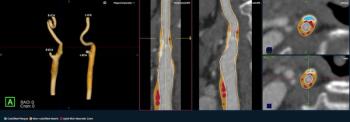
Frequent Head/Neck CTs Increase Risk of Cataracts
Patients who undergo head and neck CTs have higher risk of developing cataracts than those never exposed to the procedure.
Repeated exposure to head and neck CTs significantly increases the risk of cataract development, according to a study published in the
Researchers from Taiwan undertook a retrospective study to evaluate the possible effect of head and neck CTs on medical radiation-induced cataracts. Using a random sample from 2 million people enrolled in the Taiwan National Health Insurance Research Database, the researchers analyzed 2,776 subjects with head and neck tumors who underwent at least one CT scan between 2000 and 2009.
They were all aged between 10 and 50 years old. A control group of 27,761 subjects who were not exposed to radiation was matched by time of enrollment, age, sex, history of coronary artery disease, hypertension, and diabetes. The average follow up was 10 years.
The results showed that the subjects who had undergone CTs had a higher overall incidence of cataracts compared with the nonexposed group (0.97 percent versus 0.72 percent). As the number of CTs increased, so did the cataract frequency:
· One or two scans: 0.79 percent;
· Three or four scans: 0.93 percent;
· Five scans: 1.45 percent.
“Radiation exposure due to repeated head and neck CT studies was independently associated with an increased risk of developing cataracts when the cumulative CT exposure frequency involved more than four studies,” the authors wrote.
Newsletter
Stay at the forefront of radiology with the Diagnostic Imaging newsletter, delivering the latest news, clinical insights, and imaging advancements for today’s radiologists.
































